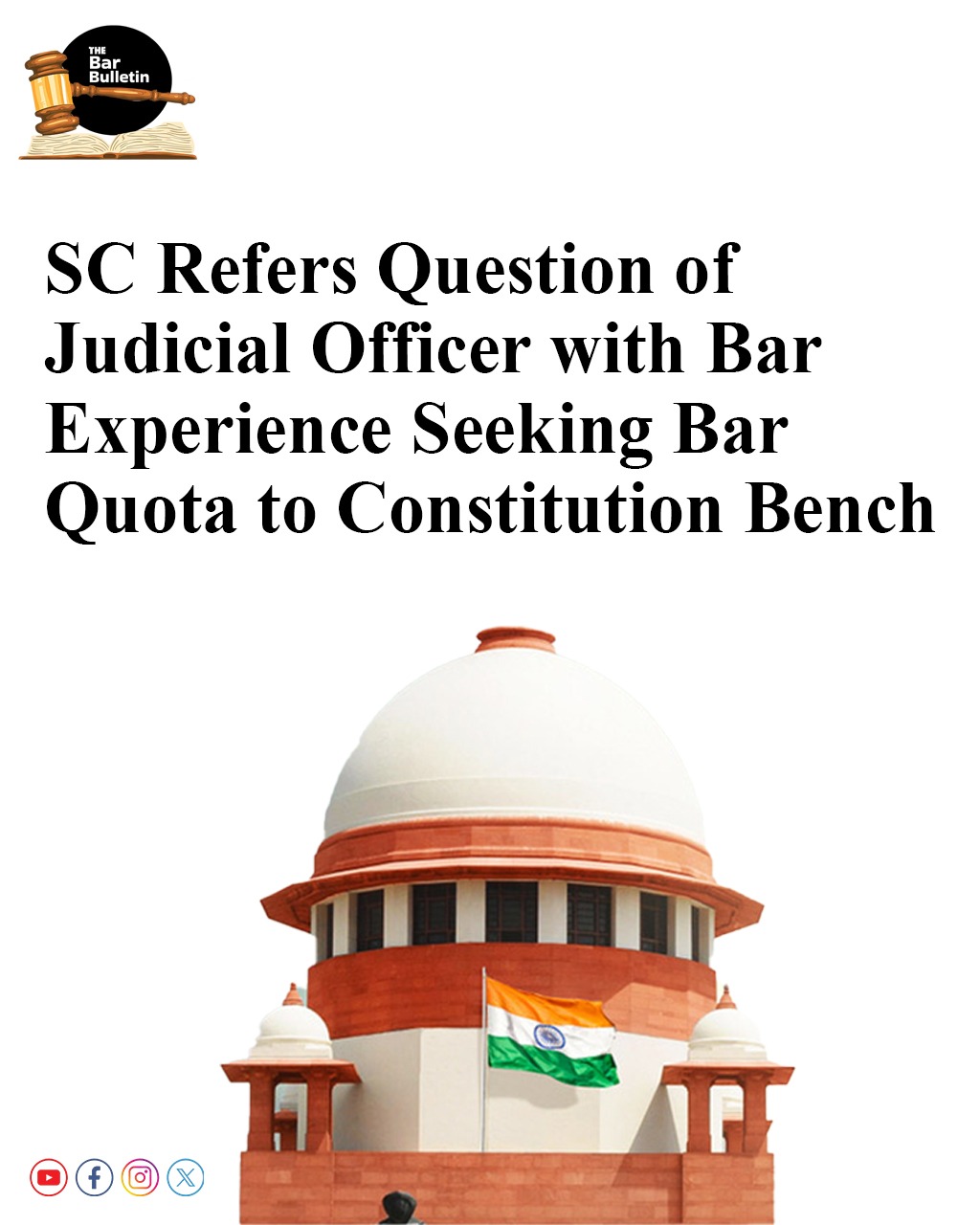The Supreme Court of India referred a significant constitutional question to a five-judge Constitution Bench: whether a judicial officer who has completed seven years of practice at the Bar before entering service can be appointed as a District Judge under the quota reserved for direct recruitment from the Bar. The move comes in a pending appeal challenging a Kerala High Court judgment that set aside the appointment of a District Judge solely because the officer, at the time of appointment, was serving as a judicial officer and not as a practising advocate.
The Kerala High Court had set aside a District Judge’s appointment, stating he became ineligible for the Bar quota once he joined judicial service as a Munsiff. The Supreme Court stayed this order in 2021, recognizing that clarity on eligibility standards is urgently needed given varied State rules and significant implications for judicial careers nationwide.
The case probes the interpretation of Article 233(2) of the Constitution, which stipulates that only advocates or pleaders with not less than seven years’ practice are eligible for direct appointment as District Judges. The current controversy centres on whether prior experience at the Bar before joining judicial service satisfies this requirement, and if eligibility should be judged at the point of application or appointment.
The Supreme Court bench, led by Chief Justice BR Gavai, Justice K Vinod Chandran, and Justice NV Anjaria noted the far-reaching repercussions and complexity of the issue, prompting referral for authoritative determination.
Historically, the issue has seen divergent judicial pronouncements. A landmark ruling in Satya Narain Singh v. High Court of Judicature at Allahabad[1] held that only those in active legal practice at the time of both application and appointment are eligible for direct recruitment against Bar vacancies, thereby excluding sitting judicial officers from consideration for these posts altogether. Conversely, some earlier judgments and commentators called for treating seven years of advocacy prior to joining judicial service as sufficient for eligibility, but the prevailing view from multiple Supreme Court decisions maintains a strict divide between recruitment channels- promotion for judicial officers and direct intake for practicing advocates.
The reference will also address whether judicial service prior to appointment, as well as hybrid experience duration combining both streams, might fulfil statutory requirements under Article 233(2).
[1] (1985) 1 SCC 225

